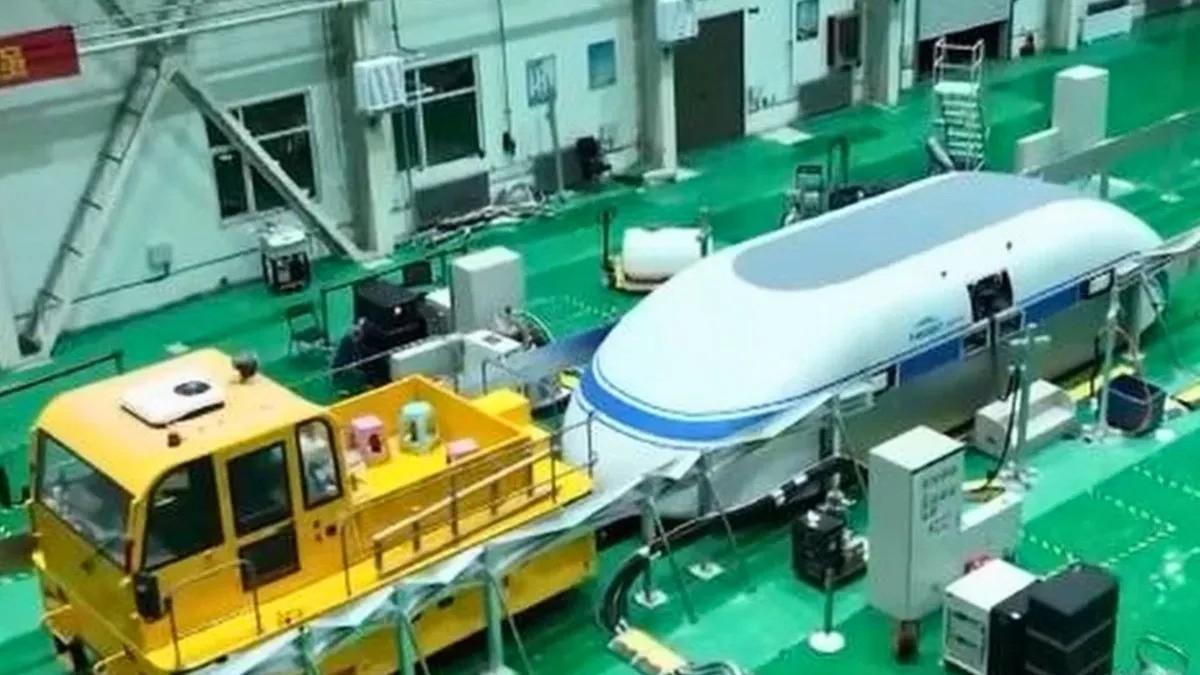Chinese aerospace defense contractor, the Third Academy of China Aerospace Science and Industry Corporation (CASIC), claims to have achieved a significant breakthrough in superconducting maglev train technology, setting a new speed record with its “high-speed flier.”
While the exact speed attained remains classified, the test system is said to propel trains within a vacuum tube at speeds surpassing 1,000 kilometers per hour, surpassing existing maglev train speeds. The achievement signifies a milestone in ultra-fast transportation, showcasing stable levitation in a low-vacuum tube over a 2km test line completed in November.
CASIC’s announcement reveals that their maglev vehicle surpassed the previous known record of 623km/hr achieved by a superconducting maglev under non-vacuum conditions in October 2023. Previous tests with high-temperature superconducting maglev technology reached speeds of 234km/hr, showcasing the company’s commitment to advancing transportation technology and laying the foundation for potential hyperloop trains.
The successful interaction between the maglev vehicle, tube, and track during the test, along with the functioning of propulsion systems and safety controls, validates the technical maturity of the system. CASIC emphasizes that these advancements provide a robust technical foundation for higher-speed trials and the eventual establishment of a national-level transportation network.
Utilizing superconducting maglev technology, the train achieves levitation, eliminating friction as it moves through a low-vacuum tube. This environment reduces air resistance, enabling “near-ground flight” at extremely high speeds. The completion of the first phase of the test line highlights the importance of seamless transitions from levitation to motion, requiring integrations and safety checks.
The test line in Datong, Shanxi province, is described as the most extensive facility of its kind in China, serving as the country’s inaugural full-scale testing ground for an ultra-high-speed low-vacuum tube maglev transportation system. Construction began in April 2022, led by CASIC’s magnetic levitation and electromagnetic propulsion technology division.
Precision was crucial in the construction, with concrete surfaces supporting the equipment requiring accuracy down to the millimeter level. CASIC’s emphasis on maintaining a vacuum state for extended periods with minimal geometric size error highlights the challenges involved. The recent test not only achieved a speed milestone but also validated essential technologies, showcasing the seamless integration of various components.
Overall, CASIC’s breakthrough in superconducting maglev technology represents a significant leap forward in high-speed transportation, with potential implications for the development of ultra-fast and efficient transportation systems, including hyperloop trains.

